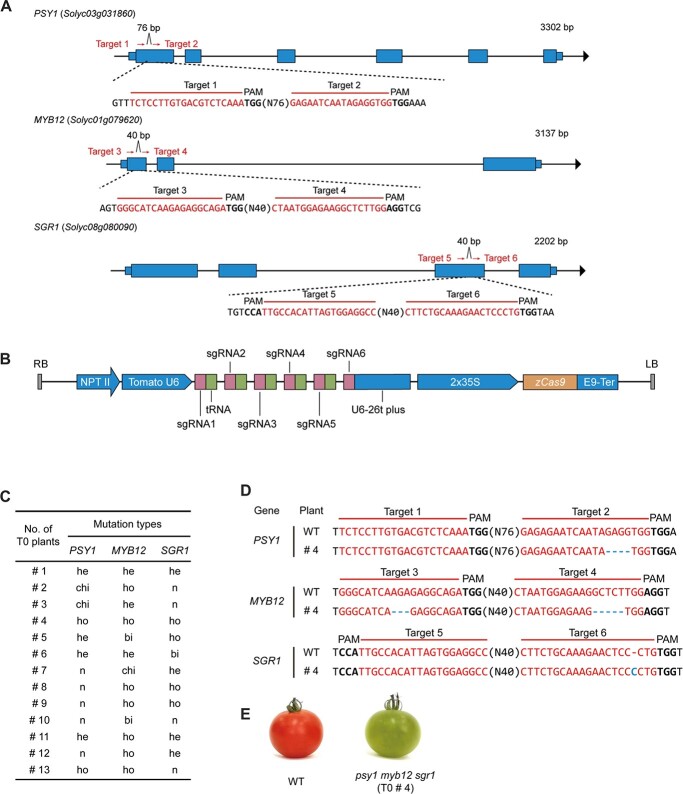Figure 2.
Generation of the psy1 sgr1 myb12 triple mutant using the CRISPR/Cas9 technology. (A) Schematic showing the exonic regions of tomato fruit color-related genes, PSY1 (targets 1 and 2), MYB12 (targets 3 and 4), and SGR1 (targets 5 and 6), targeted by CRISPR/Cas9. The blue region represents the gene exon. Two target regions separated by 76 and 40 bp were selected in the first exon of PSY1 and MYB12 genes, respectively. Similarly, two target regions separated by 40 bp were selected in the third exon of SGR1. Letters in red represent the nucleotide sequence of the targeted regions, and letters in bold font indicate the protospacer-adjacent motif (PAM) sequence. (B) Schematic diagram of the vector harboring six sgRNAs in series. NPTII served as the resistance marker gene. All six sgRNAs and their corresponding tRNAs were driven by the tomato U6 promoter and terminated by the U6-26t terminator. zCas9 was driven by the 2 × 35S promoter and terminated by E9-Ter. (C) Summary of 13 T0 lines generated using the CRISPR/Cas9 gene-editing system. he, heterozygous; ho, homozygous; n, no mutation; chi, chimeric; bi, biallelic. (D) Comparison of the DNA sequence of T0 line #4 triple mutant (psy1 myb12 sgr1) with that of the WT. (E) Representative phenotypes of T0 line #4 triple mutant (psy1 myb12 sgr1) and WT plants.

